

“That’s so cool, that you won a James Beard award,” one of the 4-H moms said to me.
“And now you’re cleaning out pig poop like the rest of us,” one of the dads said.
That about sums it up. If you have pigs, you have work to do. And it probably involves poop.
* * *

But first we gathered at the farm to meet our pigs, purchased in the auction shortly before. This was pretty much a day of pure kid and pig joy, the kids making themselves at home with the pigs:

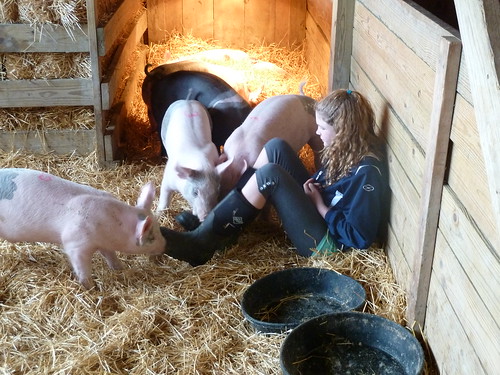
At the end of our pig meet and greet, Julie gave us a little talk about the responsibilities ahead and what it would take to have a good showing at the fair in July:
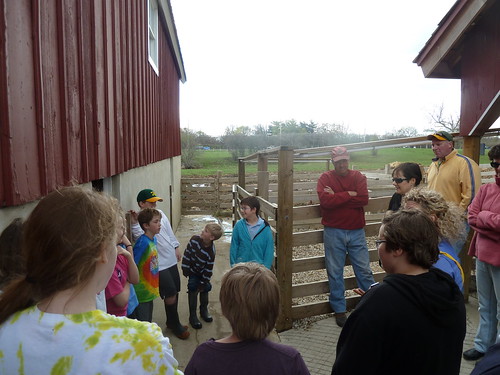
Behind the kid fun, though, adult things were happening. The moms busily coordinated the feeding and pen-cleaning schedules, keeping it all on a webpage. Julie also told us that one of the pigs was small and underweight, apparently unable to compete for feed with the other pigs; he was being kept separate in what she called “the bachelor pad” so that he would get enough to eat. We were encouraged to bring treats for our pigs when we visited— they love peanut butter-based snacks, but it’s important not to give them such things while they’re eating their feed, because they’ll want to only eat dessert, not the main course. (They also get a special supplement of “18 egg omelets made with 10 pounds of butter” from time to time.)
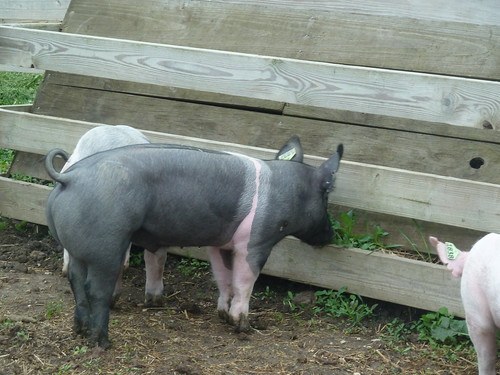
Our pig, Thor.
* * *
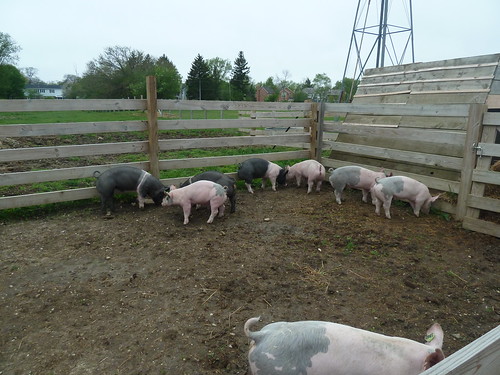
The news started coming in emails from Julie a few days later, giving us all a taste of the hard side of farming. The pigs had lesions, possibly signs of an infestation, which kept getting worse as the pigs rough-housed in the pen and scratched each other up. They were dusted with insecticide.
It didn’t clear up. The theory turned toward a staph infection called erysiperlas, even though they were vaccinated against such things. They were given penicillin.
Most of them seemed to be doing better, but then:
Dear Livestock Families,
Unfortunately, today we lost Jessica and Jayne’s pig. He appeared well as of last night but was dead this morning. The vet came and autopsied him- he was quite ill with many infections throughout his organs. Most likely the cause was erysipelas. All the pigs have had penicillin and other antibiotics since arrival, but this infection overran the medicine.
The doc gave all the pigs additional antibiotics and an extra boost of selenium.
I am so very sorry this happened and hope you will not all become too discouraged and will be especially kind to our newest pig show persons who got a run of bad luck so early.
Thank you,
Julie
* * *
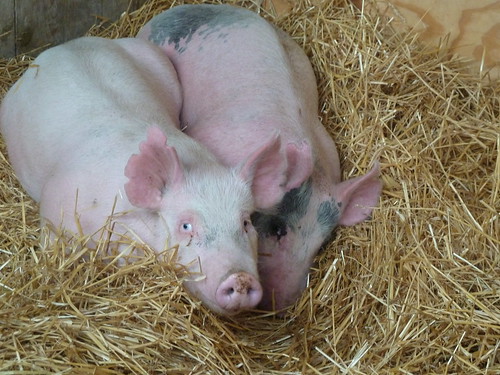
By the time we came to clean the pens, there were two new pigs— the heir and a spare, as Julie said— from the Foltzes being kept in quarantine for their first few days from the other pigs. Because one of them has blue eyes, Julie declared that we had to name him Frank. Then the question was, what to name the other? Dino, I said. I’m pretty sure the kids had no idea what either one of us were talking about.
There was also even stranger news. “One of our pigs is half boar,” Julie said. At first I thought she meant something about its breed parentage. “It still has one of its testicles,” she clarified. This is a big problem, because a boar, like a bull, gets meaner as it grows. It wasn’t clear how the animal had half-escaped castration, but whether one testicle was undescended, or it was just sloppy work, the Foltzes were embarrassed and the vet would be coming in a few days to finish the job. (It actually wasn’t one of their pigs, but another farm’s pig sold at our auction, but even so, they felt bad about saddling 4-H kids with a surprise problem like this.)
The quarantine (formerly the littlest pig’s bachelor pad, which only made the names Frank and Dino that much more appropriate) added a little wrinkle to our training in pen-cleaning. Because of this spring’s absurdly cold weather, the pigs were being kept in the sheltered pen to stay warm, but to clean the pen, we had to drive them out into another enclosure.
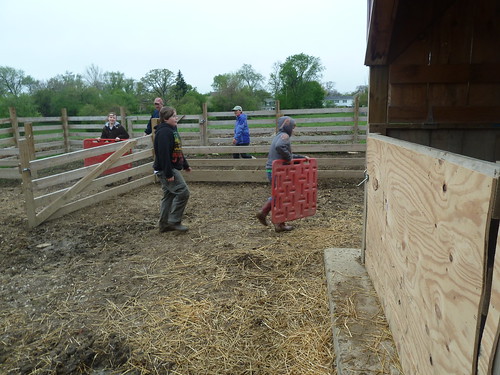
Pis, unlike lambs, will happily go out given the chance, but getting them into the other enclosure is trickier. Pigs can’t be led, they can only be kept moving until they go where you want them to go, kind of like one of those games where you roll the tiny balls trying to get them all into holes. Temple Grandin’s comments about what encourages and discourages animals from moving came back to me as we used large plastic barriers to give the pigs no choice but to run into the enclosure.
It was easy to see which corner the pigs had designated as the toilet, so we scooped up the clumpy stuff from that area and put down fresh sawdust and straw. The girls cleaning the quarantine area had to be especially careful about lifting scoops of poop-soaked hay high enough to pass over the wall.
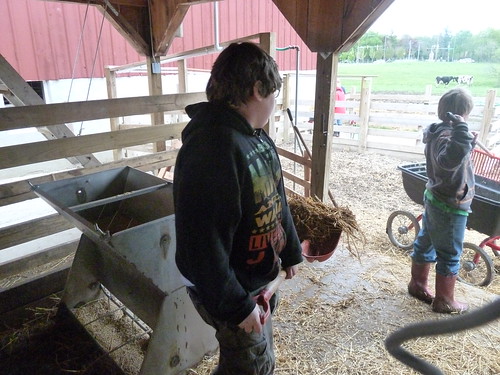

My boys dug in fearlessly. At their age I was a hopelessly prissy city kid, but they have no such qualms (and, indeed, later in the week Liam would shovel horse manure enthusiastically on his 3rd grade camping trip, telling everyone proudly that this was the second poop he’d shoveled that week. You’ll notice that cleaning up after the dog was not on his list.)
While we cleaned the pen, the lamb 4-Hers began training their animals. See if you can spot the difference between a bunch of lambs and a bunch of pigs.
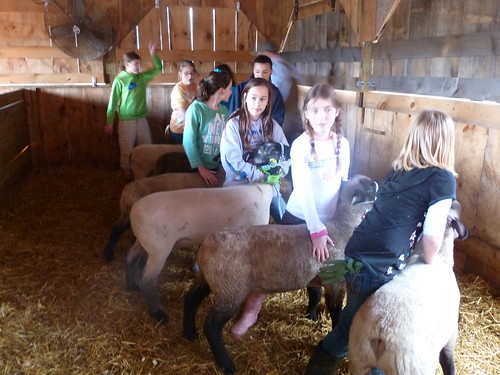


 If you like this post and would like to receive updates from this blog, please subscribe our feed.
If you like this post and would like to receive updates from this blog, please subscribe our feed.




